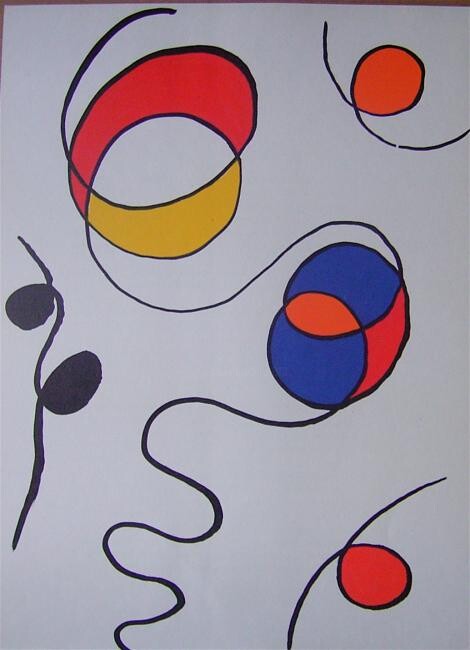Not For Sale
Seller Modern Art Transact
-
Original Artwork
Printmaking,
- Dimensions Height 16in, Width 12in
Alexander Calder, renowned for his innovative contributions to modern art, was born on July 22, 1898, in Lawnton, Pennsylvania, USA. He was the second child of sculptor Alexander Stirling Calder and painter Nanette Lederer Calder, growing up in a family deeply immersed in the arts. After studying mechanical engineering at the Stevens Institute of Technology, Calder pursued his artistic passion, enrolling at the Art Students League in New York City in 1923.
Calder's artistic career was marked by his pioneering exploration of movement and form, revolutionizing sculpture in the 20th century. Central to his oeuvre were his mobiles and stabiles, which exemplified his unique approach to creating art that moved and interacted with its environment.
In the early 1930s, Calder introduced the mobile, an abstract sculpture that responded to air currents, gently swaying and rotating. These sculptures, made from wire and sheet metal, challenged the traditional static nature of the medium and became iconic symbols of 20th-century art. Inspired by his love for the circus and his fascination with the mechanical world, Calder's mobiles often featured bold colors and playful shapes.
In addition to his mobiles, Calder created stabiles—large, stationary sculptures made of metal, which ranged from smaller tabletop pieces to monumental outdoor installations. The term "stabiles" was coined by artist Jean Arp to distinguish Calder's stationary sculptures from his mobiles.
Beyond his renowned sculptures, Calder explored other artistic avenues throughout his career. He developed a distinctive style in painting, characterized by bold colors and geometric shapes that mirrored the playful and abstract qualities found in his sculptures. His paintings showcased his ability to translate movement and energy onto a two-dimensional canvas.
Calder's artistic versatility extended to creating wire sculptures, where he used thin wire to sketch figures and objects in three-dimensional space with minimal lines. His wire portraits and animal studies are celebrated for their simplicity and elegance.
Furthermore, Calder ventured into creating jewelry, applying his sculptural aesthetic to wearable art. His jewelry pieces, crafted from metals like brass and silver, featured abstract forms and dynamic shapes that echoed the motifs seen in his larger sculptures.
Throughout his prolific career, Calder's work evolved while maintaining a consistent theme of movement, balance, and joyous expression. His innovative approach to sculpture, blending artistry with engineering principles, influenced generations of artists and continues to inspire contemporary sculptors exploring kinetics and spatial dynamics.
Alexander Calder passed away on November 11, 1976, leaving behind a rich legacy that continues to inspire and captivate art enthusiasts and scholars alike. His ability to capture the essence of movement and translate it into sculptural form ensures his place among the most innovative and celebrated artists of the 20th century, bridging the gap between art and engineering with enduring impact.
-
Nationality:
UNITED STATES

- Date of birth : 1898
- Artistic domains: Represented by a Gallery,
- Groups: Contemporary American Artists Artists presented by a gallery





 Tom Ford's Universe: From Fashion and Film to Art and Collecting
Tom Ford's Universe: From Fashion and Film to Art and Collecting
 Alexander Calder, Pioneer of Kinetic Sculpture
Alexander Calder, Pioneer of Kinetic Sculpture



